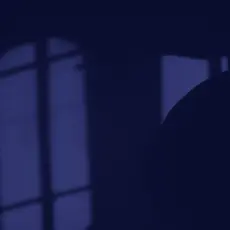While most American mourn the dead in Orlando and struggle to make sense of the largest mass shooting in American history, the reaction in the boardrooms of gun manufacturers and at the NRA might be a bit different.
Mass gun deaths — far from tragic events for these organizations — are now a significant contributor to their bottom lines. It is all part of a perverse cycle of guns, death and profit that fuels the firearms industry.
Here is how it works:
1. A mass shooting/terrorist attack garners significant media attention.
2. Public figures suggest it might be time to put in place some reasonable and widely agreed upon gun safety legislation; for example, improving our background check system, limiting the ability of those on the terrorist watch list to purchase guns, and the reinstatement of the assault weapons ban.
3. The NRA, along with allies in the conservative media, frighten their supporters into believing that Democrats — and, for the past eight years, President Obama — are going to take their guns away.
4. Gun and ammo sales spike with weapon makers profiting from the panic.
5. The weapons makers contribute generously to the NRA, which launches all-out campaigns using financial, lobbying and grassroots muscle to defeat any gun regulations, while pushing for even greater access to guns.
6. More guns make the next attack even more likely.
This is part of what University of Florida criminologist Gary Kleck identifies as the “Obama effect.” Mass shootings and the fear of new restrictions on guns, he writes, "motivat[e] gun owners to get more guns, and perhaps some non-owners to get one 'while the getting is good.'"
The fake panic created by the NRA has led to a boom for the firearms industry during the Obama years. The Washington Post reported that “in 2009, according to the ATF, gun makers produced 5.6 million guns. By 2013 their annual production had just about doubled, up to 10.9 million guns that year.”
What is driving these purchases is not a need to replace old or broken guns. Kleck points out that guns, unlike most consumer products, “are simple machines made of extremely durable materials.” In addition, most are well cared for by their owners. Hence there is no need to replace them every few years like other household items.
Therefore, gun manufacturers rely on two elements to markets guns. First, make them better (more deadly) and second, create the impression of scarcity and the need for immediate purchase, driven by the fear of potential new gun laws. The NRA takes on this role with gusto, consistently pointing to an invented threat from a tyrannical federal government.
At the same time, the organization plays an active role in promoting weapons. For example, the AR-15, which was used in Orlando to murder 49 people this past weekend, has been promoted by the NRA in nearly two dozen tweets.
Meanwhile, the NRA’s quest to liberalize gun laws has only made it easier for the perpetrators of mass violence to procure these weapons, only adding to the cycle of death.
Terrorists and those who wish to commit acts of terror have become part of this violent cycle. According to the number crunchers at FiveThirtyEight.com, "every terrorist attack in the U.S. last year in which someone other than the perpetrator was killed involved guns.” In fact, “from 2002 to 2014, 85 percent of people killed by terrorists in the U.S. were killed using guns.”
This is, in part, because of the ease with which anyone can buy a gun in the United States. FiveThirtyEight cites Arie Perliger, director of terrorism studies at the U.S. Military Academy, who explains “that U.S. terrorists are turning to guns because since Sept. 11, the federal government has monitored the use of explosives and the trade of materials that can be turned into explosives.”
According to Jeffrey Simon, author of “Lone Wolf Terrorism: Understanding the Growing Threat,” guns are “less likely [than explosives] to result in a terrorist operation being compromised.”
Hence, the acts of terror the NRA’s political advocacy assists now help pad the bottom line of their benefactors in the gun industry. They, in turn, supply the NRA with funds to contribute to politicians who support their deadly legislative agenda, creating yet another perverse cycle of dollars and death.




